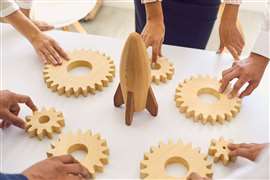Cranes: High and mighty
05 October 2020

With the impact of Covid-19 being felt across the world of construction, it is perhaps a surprise that global sales of mobile cranes are predicted to hit a record high this year. This prediction comes from market research and forecasting company Off-Highway Research and is almost completely due to the huge spike in truck crane sales expected in stimulus-driven China, with this demand seeing a staggering 48,000 mobile cranes (truck, crawler, RT and AT) sold in the country. To put this into context, the worldwide market for mobile cranes outside China is about 10,000 units per year.
Elsewhere in the world crane sales are likely to suffer as a result of the pandemic. This was particularly apparent in second quarter financial results, which showed revenues for the two large publicly traded mobile crane makers, Manitowoc and Tadano, down on the second quarter of last year and both companies reporting a loss for the quarter.
It remains to be seen how the whole year plays out and it is to be hoped that the second quarter will be the low point. However, Off-Highway Research believes that the longer-term cycle of crane sales was roughly at its peak when the Covid-19 pandemic struck, so it could be a long road back to genuine good health for manufacturers in the mobile crane segment.
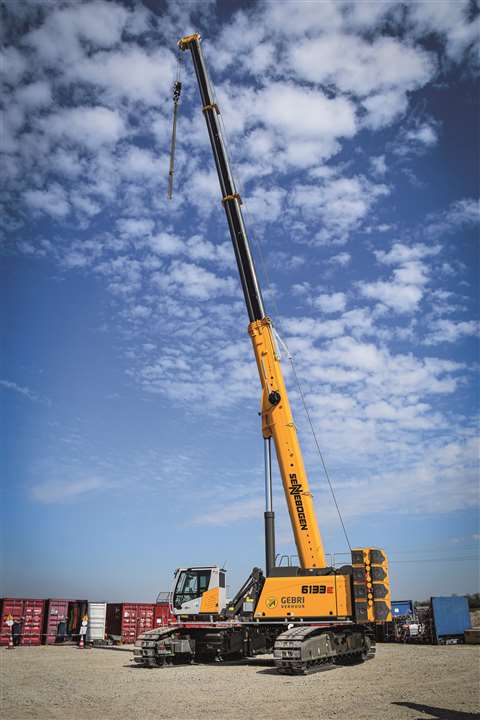
A key point about the crane market is that there is not a universally popular machine type. In China small truck cranes dominate, in Japan it is the rough terrain crane, in Europe it is all terrain cranes, while in North America there is broad mix with rough-terrain cranes being the highest volume type.
This means that the ebb and flow of sales in different regions tends to help different manufacturers, depending on what type of crane is their strength. It also tends to be the case that when a regional market ticks upwards, it is the local manufacturers (if there are any) which benefit the most.
In the current context, this means that only the Chinese crane producers will likely see any real benefit from the boom in China. On the other hand, if the stimulus bubble bursts in a year or two, it is also only them dealing with the fallout.
New cranes launched
In September this year Mammoet launched the FOCUS30, a crawler crane that the company says can help plant owners in a number of ways.
With crawler cranes often needing to be erected above live areas of the plant, this can put workers and key infrastructure at additional risk. As it can take up to four weeks for these cranes to become operational, scheduling can also be severely affected.
The FOCUS30 is said to help plant owners in three ways: First, it improves productivity by freeing up space on site. Its boom mast is assembled vertically in sections, allowing the assembly to take place from a 30x40m footprint. Second, it allows projects to start and finish sooner as the crane can be assembled within eight weeks and be transported to the lift position in smaller, more maneuverable pieces.
Finally, it reduces project risk. Boom erection does not overhang adjacent areas of the plant, so plant workers, pipe racks and other key infrastructure can operate more safely. The FOCUS30 is a 2,500 tonne class crane, and so can be used for a wide range of lifts, while its minimum 6t/m2 ground bearing pressure means it can operate at a wider range of sites.
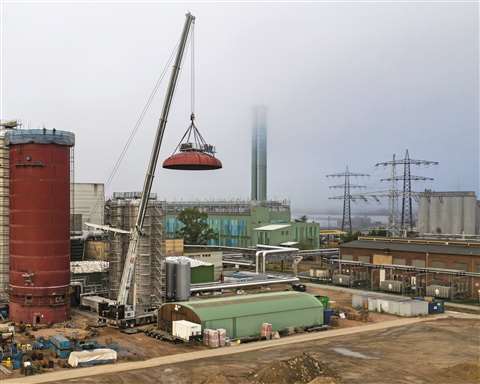
According to manufacturer Sennebogen the telescopic crawler crane concept is becoming increasingly popular as more customers recognise its advantages and invest in this flexible crane concept.
The company has developed the 6133 E to meet the growing demands of the industry – it is the largest telescopic crawler crane in the Sennebogen range with a lifting capacity of 130 tons. One of the cranes is now being used for the first time in the Netherlands for the construction of a wind farm.
Gebri Handel & Verhuur has also recognised the advantages of this machine concept and has decided on a new 6133 E, which was delivered by sales and service partner Van den Heuvel. In its first project, the crane will be used for 15 weeks in a wind farm in South Holland for the construction of five windmills. It will move and lift tower sections and concrete elements and is on long-term hire from BKV Kraanverhuur.
The project includes the construction of five wind turbines, each 130m high and with blades 60m long. This results in a total height of almost 200m. The dominating type of construction is the three-bladed lift rotor with horizontal axis and rotor on the windward side, whose nacelle is mounted on a tower and actively follows the wind direction.
The tower sections consist of prefabricated concrete rings, which are assembled on the ground and then placed in position. The elements each weigh between 10 and 15 tonnes; the complete ring weighs around 50 tonnes. Due to its equipment length, the new 6133 E is equipped with a six-section boom. As usual in the industry, the individual sections are moved in the cylinder cycle system. This enables the new machine to reach a maximum boom length of 5m – with the optional 15m top boom even reach heights of almost 70m can be reached.
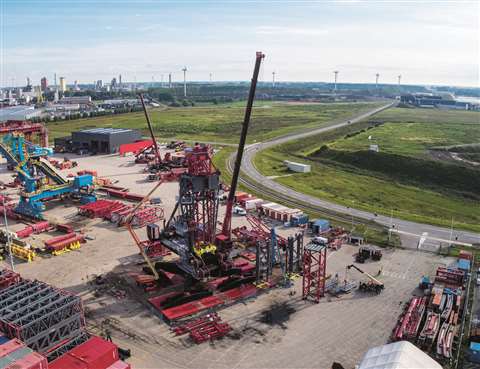
The telescopic crawler undercarriage can be retracted to a total machine width of less than 4m for transport and moving. For crane rental companies, the easy transportability of the telescopic crane is particularly important. With the help of the self-assembly system of the Starlifter tele-undercarriage, the machine can be assembled and disassembled in a few steps and without additional auxiliary cranes.
Easy does it for Grove GMK6400
From one energy project to another, a Grove GMK6400 crane from BKL’s crane fleet is playing a key role in the construction of the new heat storage system on Ingelheimer Aue between Wiesbaden and Mainz in Germany.
The specialists at the Frankfurt location of BKL Baukran Logistik GmbH planned the operation and completed the last lifting job with the powerful Grove AT crane.
The crane placed the cover of the heat storage container (a component weighing 35 tonnes) on the 36m high special container for a total height of 43m after assembly. The diameter of the container was approximately 12m. The GMK6400 – with a lifting capacity of 400 tonnes and added MegaWingLift for additional power – showed its full potential during this challenging lift, without taking up as much of a footprint as a large crane.
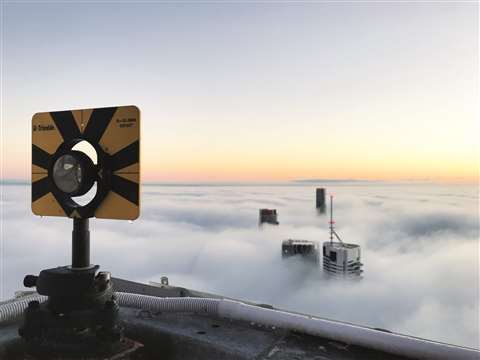
“During this operation, the crane had to lift a heavy load in a relatively confined space. The powerful 6-axle GMK6400 crane is an ideal crane for this type of lift,” stated BKL. “With the additional self-rigging MegaWingLift strength,
our GMK6400 from the Frankfurt BKL fleet can handle enormous loads, which has proven to be a great advantage in placing the cover on the heat storage container.”
The cover was placed on the heat storage for district heating in just one morning. The 35-ton cover hovered in the air and was placed in the predetermined position within a very short time, thanks to the skill of the experienced BKL crane operator.
“The GMK6400 arrived well at the site of Kraftwerke Mainz-Wiesbaden AG on the industrial peninsula and could be quickly assembled and disassembled – due to the self-rigging MegaWingLift hoist,” commented BKL.
Crane technology to the fore
New technology is becoming increasingly common in the construction industry, with cranes no exception. Demag has announced the official market launch of the IC-1 Remote following successful pre-release versions.

With the cloud solution, all relevant crane data can be accessed from anywhere and it is available for almost all new Demag all terrain and crawler cranes, with a retrofit option being offered for many older models.
IC-1 Remote expands the possibilities of the IC-1 control system to incorporate mobile remote access to all key crane data. Users can select the required display parameters and configure their personal dashboard. If various users have access to the crane data, several customised dashboards can be created.
The data can be accessed at any time, from any location, from any terminal device, such as stationary PCs in offices, mobile tablets or smartphones with internet access. On the start page, authorised users can see all the cranes in their entire fleet that are connected to the IC-1 Remote network.
Crane innovations abound
Staying with the theme of new technology, Demag has also announced that, upon request, the AC 45 City is available with an electro-hydraulic E-Pack that makes quiet, zero-emission crane operation possible thanks to an integrated 32-kW electric motor.
Potential applications include indoor projects, projects in dense urban areas, and projects at night in residential areas in which running the crane with the 260-kW diesel engine (EU Stage V / Tier 4f) is not possible.
When traveling, the crane can transport this E-Pack at the back so that it will not be necessary to transport the unit to the work site separately. Once at the site, the E-Pack can be automatically let down from the crane and connected to a power supply.
Finally, to a project that is now completed but that posed a very specific challenge – while building the Brisbane Skytower in Australia, Hutchinson Builders encountered an unusual challenge: a height ceiling was placed on the building’s hammerhead tower crane because it was operating in a critical flight path for nearby Brisbane International Airport.
Permission was granted for the crane to operate above the height limit during daylight hours only and with strict conditions, including continual monitoring of the crane height by the Civil Aviation Safety Authorities and the Brisbane Airport. Upon receiving these terms, Hutchinson worked with UPG to quickly implement an automated Trimble monitoring system.
The first part of the solution was to place Trimble NetR9 Ti-M GNSS reference receivers on top of the crane’s A-frame and at the end of the boom. Even though it was a hammerhead crane, the end of the boom still moved up to 600 mm-plus when picking up heavy loads.
With the monitoring hardware in place, Trimble 4D Control (T4D) software was used to keep all parties informed in real-time of the crane’s movement. Any team member, from anywhere in the world, could access the data.
In addition to the monitoring solution, the crane was placed on first-of-its-kind hydraulic jacks that would raise and lower the crane as needed. This feature was used to put the crane to bed each night, tucking it below the building line to keep aircraft safe in their flight path. It would also be used any time the crane had to go up or down due to wind or other weather conditions.
This system relied on T4D to meet quality assurance requirements by providing instant reporting at any time of day, with measurements taken approximately every 30 seconds. Additionally, alarms were programmed to send an SMS and email to all stakeholders if at any point the crane exceeded the height threshold.
Hutchinson became the first company to overcome the challenge posed by the restricted airspace, setting the standard for monitoring future skyscrapers moving forward.
Dubai delivery
Liebherr 130-tonne duty cycle crawler cranes round out rental fleet
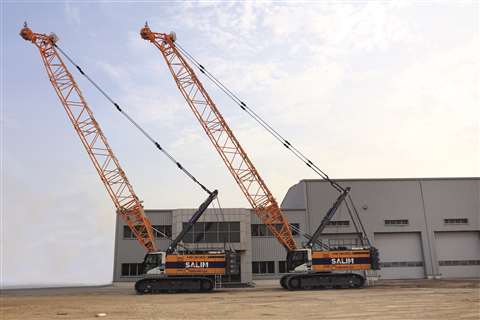
Earlier this year Salim Equipment Rental LLC based in Jebel Ali Free Zone, Dubai, and their joint venture partner Daikyo Kenki Co. based in Tokyo, Japan, decided to increase their fleet with two duty cycle crawler cranes to offer their services to the specialised foundation industry in the Middle East.
Mr. Sajil Salim and Mr. Ryuichi Uchida, co-owners of the machines, investigated the market and decided on the Liebherr HS 8130.1 due to its proven technology for operation in the harsh environment and the local support from Liebherr’s own service organisations in the Middle East. The cranes were delivered in July 2020 and handed over by Liebherr representatives, Mr. Knut Brandenburg and Mr. Samir Hussein.
Equipped with the latest Liebherr technology, including the automated freefall system and the Liebherr duty cycle features, the cranes are well configured for the Middle East. Both cranes have already been assigned to a jobsite in the United Arab Emirates where they will be working for the next few months.




